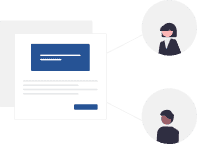How to generate a Security Audit Form
What is a Security Audit Form?
The Security Audit Form is a non-legal tool, intended as an aid for documenting the technical and organizational measures in your business to ensure the security of personal data. A comprehensive security audit is a fundamental step towards GDPR compliance, as well as general good practice in data privacy protection. This Security Audit Form comprises 10 sections. Not all sections or questions may apply to your business. Take this as a starting point and revisit this form periodically. In-depth knowledge of the GDPR is not required to fill in this audit form, but honest answers are necessary for the integrity of record-keeping. If you are not sure of the answer, don’t know, or need to check, fill in the fields accordingly.
What should be included in the Security Audit Form?
The organization should include the following security audit checklist that can help you get the proper result. So, when conducting a security audit, you should: Describe the Scope of the Audit: Analyze all the devices on your network and the operating system they use. Once you know the endpoints, decide on a security boundary. This boundary keeps unwanted software out, so provide instructions of what classifies as risky software. List out possible threats: You need to analyze and make a list of potential threats so you know what to look for and how to comply with future security measures. Here are some of the common examples of security threats are:
- Malware
- Negligence of employees (using a weak password for sensitive company data)
- Malicious attacks (misuse of sensitive information)
- Disturbed Denial of Service
- Malicious insiders
Check the current level of security performance: Though your organization might be using the proper security procedures and best methods for security audit check. But might not know to realize the latest methods used by hackers to penetrate the system. So, a good assessment of the organization’s security performance and a security audit form will help analyze the weak links. Create Configuration Scans: A high-quality scanner will help you identify security vulnerabilities and check the hardening of the PCs if there is any malware, anti-spyware in the programs. While performing a security audit you can also include configuration scans to ensure that there are no such mistakes done. Protect the Sensitive Data: Analyze all sensitive data in your system because they might be the prime target for hackers. You should be very careful and protect that information by:
- Limiting the access to sensitive data as much as possible and giving control to the admins only.
- Create a separate access log or password to the sensitive data.
- Do not store sensitive data on a common storage site.
Audit the Servers: Most of the company’s valuable data is on your servers. Make sure that all the network configurations are set up correctly by checking:
- DNS servers
- WINS servers
- Static addr assignments
- Binding orders
- Backup networks
Make a server list that details all the servers on your network because this will help to locate the right server quickly in case of an emergency such as, IP address, server dates, default hosts, and many more. Check the Action Management System: Check the management system, inspect the activity logs and security audit form. Analyze if the users are following the given guidelines. If you see some suspicious activities modify the protocol and add one for future network security audits. Check Training Logs: Even a highly secure network can be pointless due to a personal mistake. So, to prevent these types of errors by the employees, the organization should evaluate the scope of the training process and ensure all the staff is well trained. Assure all the Network Software is up to date: Make sure all your software (anti-virus and anti-malware) is up to date with the latest version to protect from cyber threats. Regular Network Security Audits: Network security audits should be performed regularly to keep your system secure and maintained. Monitor your Firewall’s Logs: Watch for any uncertain behavior in your firewall.
Who performs the security audit of an organization?
Security audit often touches upon highly confidential information in your business. This audit should be taken by a senior officer in your business who is familiar with the technical and administrative procedures and measures adopted in the business.
How do you do a security audit?
A security audit usually takes place in the following way:
1. Agreement on the goals: All involved stakeholders discuss what should be achieved after the audit.
2. Definition of the scope of the audit: All assets to be audited will be listed. This includes computer equipment, documentation as well as processed data.
3. Processing the audit and identifying threats: Identify potential threats including the loss of data, probable damage to equipment or records through natural disasters, malware or unauthorized users, and others.
4. Evaluation of security and risks: Assess each identified risk can plan how you can defend against each of them.
5. Determining the needed controls: determine what the needed security measures are and how they must be implemented or improved to minimize risks.
Conclusion
A security audit form is essential to ensure the security of every organization’s data from being misused.
You Might Also Like
Along with this document, make sure you see these other templates in our library:
Stay compliant with the Zegal template library
Zegal legal template are meticulously crafted with the precision of AI and the expertise of seasoned human lawyers, providing a unique blend of speed and reliability.
You can trust that Zegal agreements are legally sound and fully compliant with current regulations.
Whether you're a startup, SME, or a larger enterprise, Zegal contract management will automate and speed up your legal processes.
Using Zegal will reduce risk, save money, and improve efficiency. Let us take care of the paperwork so you can focus on running your business.
Don’t compromise on speed or compliance. Stay secure, compliant, and efficient with Zegal.







